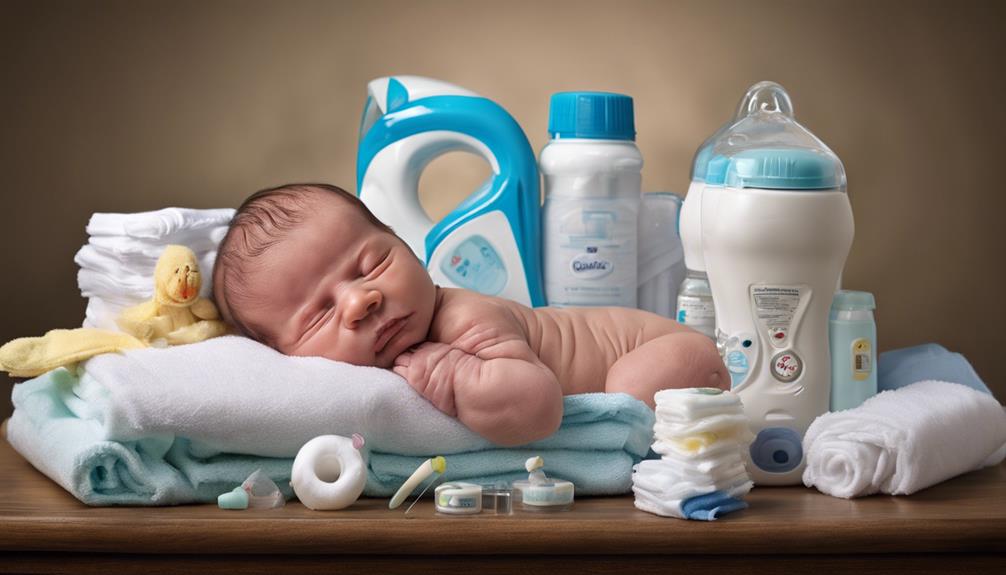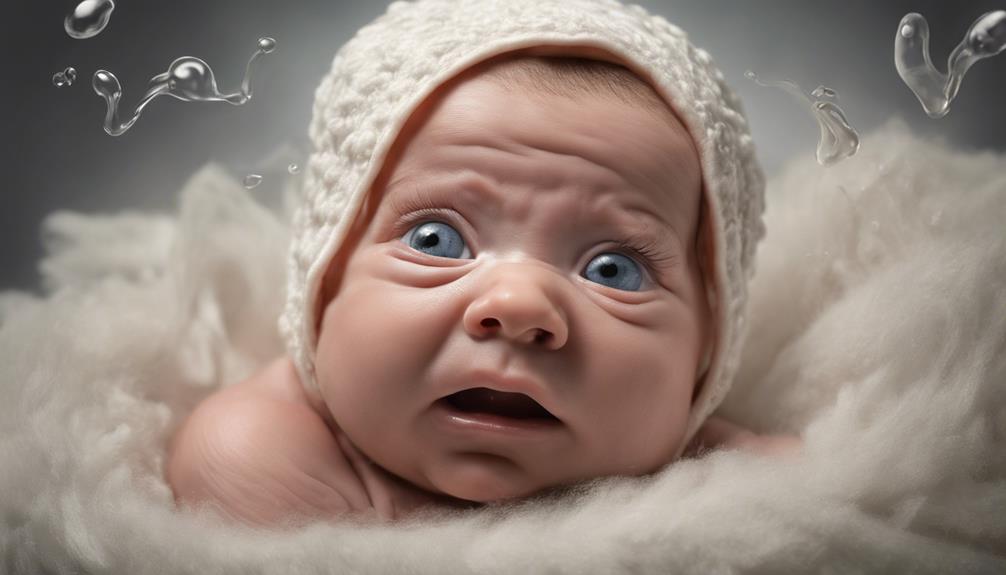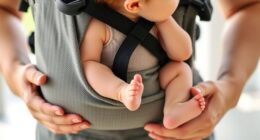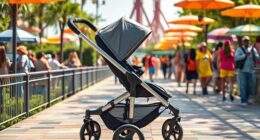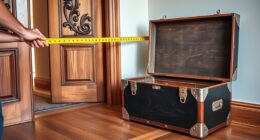When it comes to calming hiccups in newborns after a meal, you might feel like you're sailing uncharted waters. However, there are proven methods that can help ease your little one's discomfort.
From simple burping techniques to soothing massages, these strategies could be the key to relieving those post-feeding hiccups.
But what if these hiccups persist or seem out of the ordinary? Stay tuned to discover more about effectively soothing hiccups in newborns after they've eaten.
Key Takeaways
- Swaddling creates a cozy environment mimicking the womb, aiding in calming hiccups after feeding.
- Using a pacifier distracts the baby and regulates breathing, effectively soothing post-feeding hiccups.
- Burping gently after feeding releases trapped air, reducing discomfort and minimizing hiccups.
- Changing feeding positions helps in digestion and prevents excess air intake, lowering the occurrence of hiccups.
Swaddle the Baby
When comforting your newborn and aiming to alleviate hiccups, consider swaddling the baby for a secure and calming effect after feeding.
Swaddling is a technique that can provide a cozy and secure environment for your little one, mimicking the feeling of being in the womb.
This sense of security may help relax your baby's diaphragm and potentially reduce hiccups that often occur after eating.
Offer a Pacifier
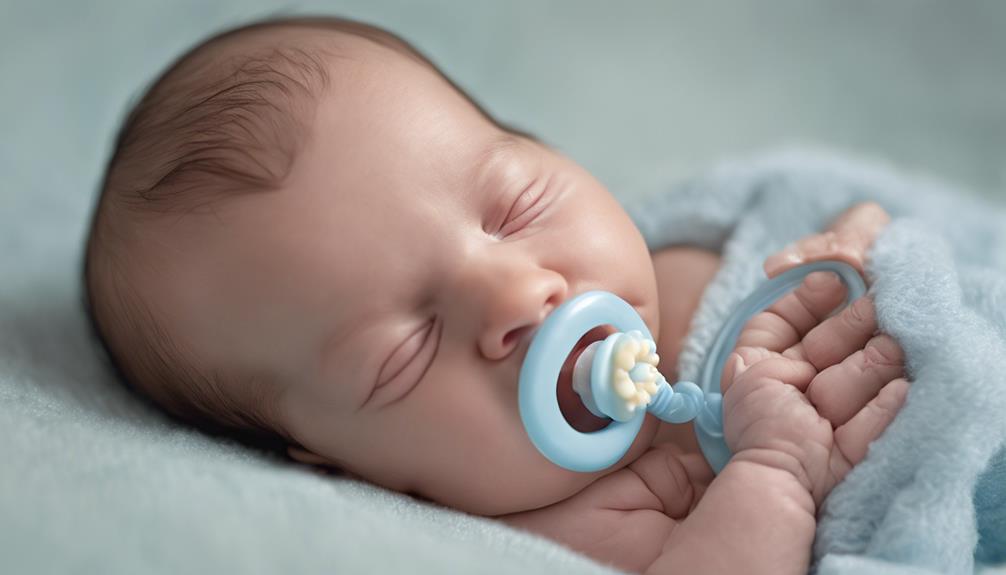
To further ease your newborn's hiccups, consider offering a pacifier as a simple and safe solution that can help relax their diaphragm and provide comfort after feeding. Using a pacifier can be an effective way to soothe your baby's hiccups. Here's why it works:
- Distraction: Sucking on a pacifier can distract your baby from the hiccups and may help stop them after eating.
- Breathing Regulation: The sucking motion while using a pacifier may assist in regulating your newborn's breathing and reducing hiccups.
- Comfort and Alleviation: Offering a pacifier after feeding can provide your little one with comfort and aid in alleviating hiccups, making it a gentle and easy remedy to try.
Introducing a pacifier to your baby after meals could be a beneficial way to help them manage hiccups and feel more at ease. Remember to choose a pacifier that's safe for your newborn's age and development stage.
Burp the Baby Gently
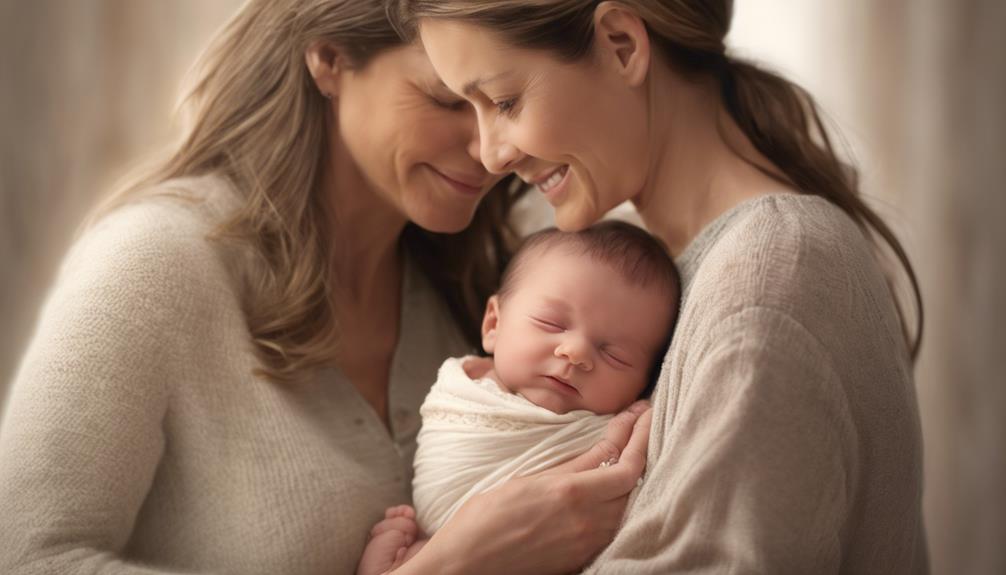
Gently patting or rubbing your baby's back after feeding can help release trapped air and reduce hiccups. Burping your baby is a simple yet effective way to ease any discomfort caused by trapped air during feeding. Ensuring your baby is in an upright position while burping aids in the natural process of releasing air, thereby minimizing the chances of hiccups. Remember, burping should be done gently to prevent any unease for your little one.
Try Gripe Water
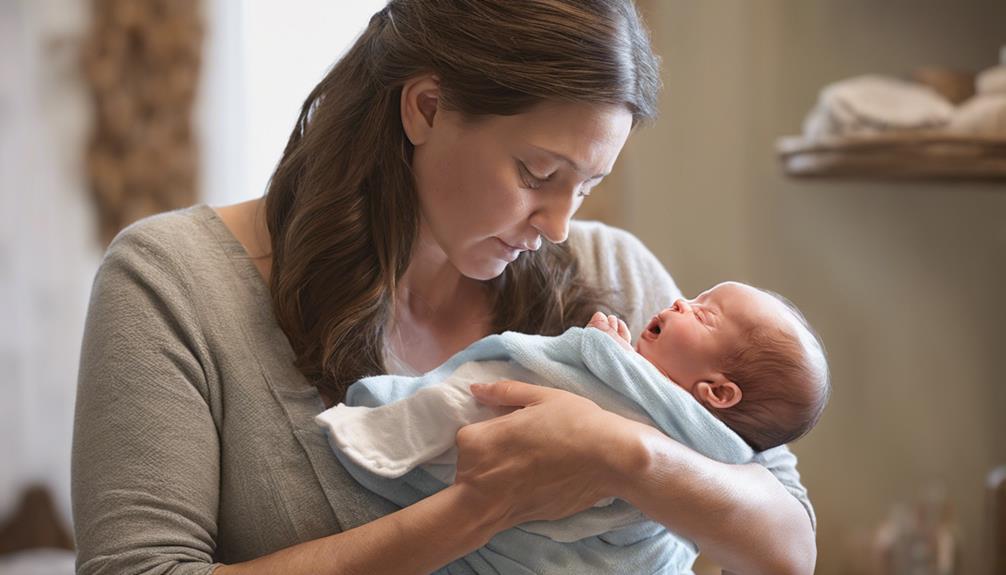
Ease your newborn's hiccups by considering the gentle properties of gripe water, a natural remedy containing beneficial herbs like ginger and chamomile. Gripe water is often used to soothe digestive discomfort in newborns and may help calm the stomach, reducing gas that could be causing the hiccups.
When using gripe water, remember:
- Start with Small Doses: Introduce gripe water gradually to assess your baby's response.
- Consult Your Healthcare Provider: Before using any remedy, including gripe water, it's essential to seek advice from a healthcare provider to make sure it's safe and appropriate for your newborn.
- Monitor Effectiveness: Keep an eye on how well the gripe water is working to alleviate hiccups and whether your baby shows any adverse reactions.
While gripe water is a popular choice for soothing newborns, remember that scientific evidence specifically supporting its effectiveness for hiccups is limited. Always prioritize the advice of your healthcare provider when considering remedies for your baby's digestive discomfort.
Change Feeding Positions

Consider adjusting your newborn's feeding positions to help alleviate hiccups after meals. Holding your baby upright while feeding can greatly reduce the chances of hiccups occurring. This position can help prevent excess air intake, which is often a common cause of hiccups in newborns. Additionally, keeping your baby in a slightly inclined position during and after feeding can aid in digestion and further minimize the occurrence of hiccups.
Using a nursing pillow or cushion to support your baby during feeding is beneficial as it promotes proper positioning, ensuring that your little one is in a comfortable and best posture for feeding. Experimenting with different feeding angles and positions can also help you find the most effective posture to reduce hiccups after meals. By providing adequate support and adjusting feeding positions, you can help alleviate your newborn's hiccups and make feeding time a more comfortable experience for both you and your baby.
Massage the Baby's Back

When massaging your baby's back gently, you can help relax the diaphragm and potentially aid in stopping hiccups after eating. Here are some key points to bear in mind when massaging your baby's back to soothe hiccups:
- Applying light pressure in a circular motion can stimulate the nerves involved in hiccup reflexes.
- Back massage may help release trapped air in the stomach, which could be a contributing factor to hiccups after feeding.
- Using a slow and soothing touch while massaging the baby's back can create a calming effect that may alleviate hiccups.
Use a Slow-Flow Nipple
When feeding your newborn, selecting a slow-flow nipple is essential. This helps regulate the milk flow, preventing overfeeding and air intake that can cause hiccups.
Opting for a slow-flow nipple can create a comfortable feeding experience and reduce post-feeding hiccups.
Nipple Size Matters
To guarantee ideal feeding and minimize the chances of hiccups in newborns, selecting a slow-flow nipple is essential for regulating milk flow and reducing air intake during feeding. Ensuring the right nipple size is equally important for comfortable feeding and hiccups prevention.
Here are three key points to take into account:
- Proper Fit: Choose a nipple size that allows for a comfortable latch and efficient feeding, reducing the intake of excess air.
- Mimicking Breastfeeding: Opting for a slow-flow nipple mimics the natural breastfeeding process, aiding digestion and decreasing post-feeding hiccups.
- Enhanced Comfort: The right nipple size contributes to a more relaxed and enjoyable feeding experience for your baby, promoting better overall well-being.
Gentle Feeding Technique
Selecting a slow-flow nipple for gentle feeding can greatly reduce the likelihood of newborn hiccups by minimizing air intake during feeding. This feeding technique allows your baby to swallow less air, decreasing the chances of hiccups after eating.
The essential flow rate of a slow-flow nipple promotes a more relaxed feeding pace, preventing your baby from gulping air too quickly. Ensuring you have the right nipple size is vital in soothing hiccups after feeding, as it helps maintain a steady milk flow that matches your baby's needs.
Frequently Asked Questions
How Do I Stop My Newborn From Hiccuping After Feeding?
To stop your newborn from hiccuping after feeding, try burping frequently, holding upright for 20-30 minutes, and using slow feeding techniques. Avoid overfeeding and opt for smaller, more frequent meals for a happier, hiccup-free baby.
Is It Normal for Newborns to Get Hiccups After Eating?
It's totally normal for your newborn to have hiccups after eating. Their tiny system is still developing. Those cute hiccups should go away on their own. Just keep cuddling and soothing them.
How Do You Settle a Newborn's Hiccups?
To settle your newborn's hiccups, try gently patting their back or holding them upright. Offering a pacifier or small sips of water may also help. Create a calm environment for your baby to rest and naturally ease the hiccups after eating.
Should I Keep Feeding My Newborn if He Has Hiccups?
If your newborn has hiccups after eating, it's okay to keep feeding. Hiccups are common and won't harm your baby. Gently burping during or after feeding can help soothe them. Keep calm and continue nurturing.
Conclusion
To sum up, hiccups in newborns after eating can be effectively soothed using various techniques like swaddling, offering a pacifier, and gently burping the baby. Remember to create a calm feeding environment and seek medical advice if hiccups persist.
So, next time your little one has the hiccups, don't fret – try these tips and watch those pesky hiccups disappear like a charm!

